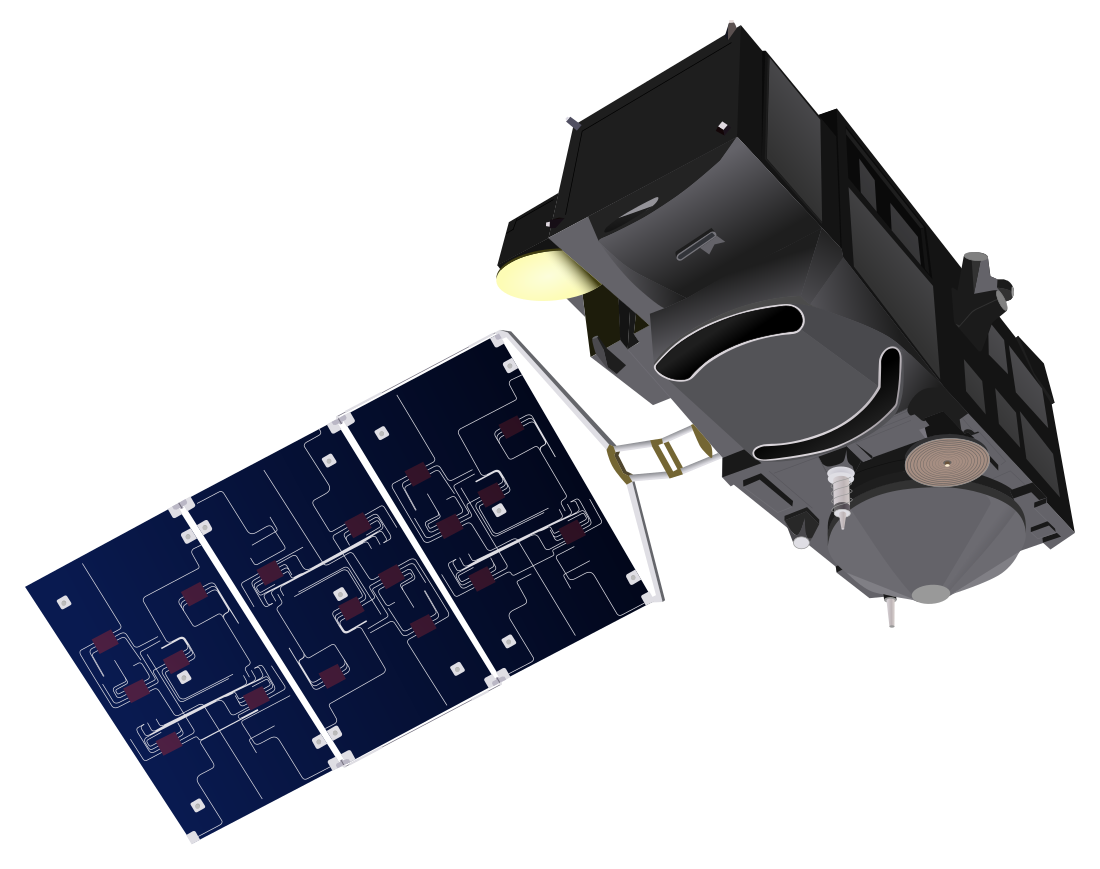Sentinel-3C is a future European Earth observation satellite dedicated to oceanography which is expected to launch in 2026.[3][4] It is part of the Copernicus Programme, and the third of four planned Sentinel-3 satellites (after Sentinel-3B, launched on 16 February 2018).[5][6][7][8][9][10]
Quick facts Mission type, Operator ...
Sentinel-3C Vector drawing of the Sentinel-3 |
|
| Mission type | Earth observation |
|---|
| Operator | ESA · EUMETSAT |
|---|
| Website | Sentinel-3 (ESA) |
|---|
| Mission duration | Planned: 7 years |
|---|
|
|
|
|
| Spacecraft type | Sentinel-3 |
|---|
| Bus | Prima |
|---|
| Manufacturer | Thales Alenia Space |
|---|
| Launch mass | 1,250 kg (2,756 lb)[1] |
|---|
| Dry mass | 1,150 kg (2,535 lb)[2] |
|---|
| Dimensions | 3.9 × 2.2 × 2.2 m (12.8 × 7.2 × 7.2 ft)[1] |
|---|
| Power | 2,300 watts[2] |
|---|
|
|
|
|
| Launch date | 2026 (planned) |
|---|
| Rocket | Vega-C |
|---|
| Launch site | Kourou, ELV |
|---|
| Contractor | Avio |
|---|
|
|
|
|
| Reference system | Geocentric |
|---|
| Regime | Sun-synchronous |
|---|
|
|
|
|
| Band | S band (TT&C support)
X band (science data) |
|---|
| Bandwidth | S band: 64 kbit/s uplink, 1 Mbit/s downlink
X band: 2 × 280 Mbit/s |
|---|
|
|
| Instruments |
|---|
| OLCI | Ocean and Land Colour Instrument |
|---|
| SLSTR | Sea and Land Surface Temperature Radiometer |
|---|
| SRAL | Synthetic Aperture Radar Altimeter |
|---|
| MWR | Microwave Radiometer |
|---|
| DORIS | Doppler Orbitography and Radiopositioning Integrated by Satellite |
|---|
| LRR | Laser Retro-Reflector |
|---|
| GNSS | Global Navigation Satellite System |
|---|
|
| |
Close

